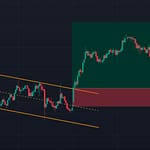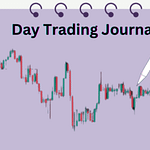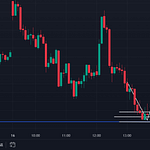Options trading is a very risky but highly rewarding type of business. Due to high risk traders have to manage their risk properly, because it is a game of wisdom and risk management mainly. If traders learn risk management then no one can stop them from becoming a profitable day options trader. Becoming a profitable day options trader requires a combination of knowledge, skills, discipline, and risk management.
In this blog post, we’ll explore the essential steps and strategies you need to become a successful day options trader. From managing risk to executing profitable trades, we’ll cover everything you need to know to start your journey toward financial independence through day options trading. So, buckle up and get ready to dive into the exciting world of day options trading!
Here are some steps to help you on your journey:
Table of Contents
ToggleI. Educate Yourself To Become Profitable Day Options Trader:
As like any business, in the stock market and especially in options trading learning is the most important part. Without learning no one can understand the market and its dimensions.
1. Learn the Basics of Options Trading:
Options:
These are financial instruments that give you the right (but not the obligation) to buy or sell an asset, like stocks, at a predetermined price before a specific expiration date.
Call Option:
This gives you the right to buy an asset at a set price within a certain timeframe.
Put Option:
This gives you the right to sell an asset at a set price within a certain timeframe.
2. Understand Option Pricing:
Options have prices, known as premiums, which you pay to buy them. Several factors influence this premium.
Implied Volatility:
This reflects the market’s expectation of how much the asset’s price might change. Higher volatility usually leads to higher option premiums.
Time Decay (Theta):
As time passes, the value of an option decreases. This is because the chance of the option becoming profitable diminishes as it gets closer to expiration.
Underlying Asset Movements:
The price movement of the actual asset (e.g., stock) influences the option’s value. If the asset moves favorably, the option’s value tends to increase.
Understanding these basics is crucial because it helps you make informed decisions when trading options. For example, if you expect a stock’s price to rise, you might consider buying a call option. If you anticipate a price drop, a put option might be more suitable. Additionally, being aware of implied volatility and time decay helps you choose the right options strategy based on your market outlook and risk tolerance.
II. Understand the Risks:
Options trading involves a high level of risk. Understand and acknowledge the risks associated with trading options, and only trade with capital you can afford to lose. Options trading is like playing a game with money, where you try to predict if the price of something, like a stock, will go up or down. But, just like any game, there are risks involved.
Imagine you’re playing a game of chance at a fair. You could win big, but you could also lose your money. Options trading is similar. There’s a chance you could make a lot of money, but there’s also a chance you could lose everything you put in.
So, it’s really important to understand these risks before you start trading options. You should only use money that you’re okay with losing. Think of it like going to a casino – you wouldn’t bet your life savings, right?
Knowing and accepting these risks is super important to being a smart options trader. You want to make sure you’re prepared for whatever might happen.
Read More: The Importance of Risk Management in Options Trading.
III. Create a Trading Plan:
Develop a detailed trading plan that includes your financial goals, risk tolerance, and trading strategy.
Outline your entry and exit criteria, risk-reward ratios, and position sizing. Think of a trading plan as a roadmap for your money. It helps you stay on track and make smart decisions when you’re trading stocks or other investments. Let’s break it down:
1. Financial Goals:
First, figure out what you want to achieve with your trading. Do you want to make a certain amount of money? Save for something special? Knowing your goals helps you make decisions that align with what you want to achieve.
2. Risk Tolerance:
This is how comfortable you are with taking risks. Some people are okay with taking big risks to potentially make big gains, while others prefer to play it safe. Knowing your risk tolerance helps you decide how much you’re willing to risk on each trade.
3. Trading Strategy:
This is your game plan for making trades. It includes things like which stocks you’ll trade, when you’ll buy and sell, and how you’ll analyze the market. Your strategy should match your goals and risk tolerance.
4. Entry and Exit Criteria:
These are the signals that tell you when to enter a trade (buy) and when to exit (sell). For example, you might decide to buy a stock when its price crosses above a certain moving average and sell when it falls below another.
5. Risk-Reward Ratios:
This is a way of balancing the potential reward of a trade with the risk you’re taking. For example, you might aim for a risk-reward ratio of 1:3, which means you’re risking 1 Rs to make 3 Rs. This helps you make sure the potential reward is worth the risk.
6. Position Sizing:
This is how much money you’ll invest in each trade. It’s based on your risk tolerance and the size of your trading account. You don’t want to put too much money into one trade and risk losing it all, but you also want to invest enough to make it worth your while.
Putting all of this together, your trading plan will help you make smart, calculated decisions that align with your goals and risk tolerance. It’s like having a blueprint for building wealth through trading.
IV. Choose a Trading Strategy:
Select a trading strategy that aligns with your risk tolerance and market outlook. Common strategies include covered calls, protective puts, straddles, and iron condors.
Consider both technical and fundamental analysis in your decision-making process. Choosing a trading strategy is like picking the right tool for the job. You want something that fits your style and the situation. Let’s look at some common strategies and how they work:
1. Price Action:
Price action is one of the best trading strategy for profitable options trading. Which includes support resistance, various chart patterns, candlestick patterns and most important chart reading. If some one learn chart reading properly then there is no need of any other things and “it is a personal experience”. On the basis of chart reading some one can create own set ups, which can gives edge in trading and due to this edge trader always one step ahead from fellow traders. This is the main requirement of becoming profitable day options trader.
2. Covered Calls:
This strategy is like renting out your stocks. You already own some shares, and you’re willing to sell them if the price goes up. So, you sell call options to someone else. If the stock price stays the same or goes down, you keep the money from selling the options. If the price goes up a lot, you might have to sell your shares, but you still get to keep the money from selling the options.
3. Protective Puts:
Think of this like buying insurance for your stocks. If you own some shares and you’re worried the price might go down, you can buy put options. If the price does drop, the put options will increase in value, helping to offset the losses on your shares.
4. Straddles:
This strategy is for when you think a stock is going to move a lot, but you’re not sure which way. You buy both a call option and a put option at the same strike price and expiration date. If the stock makes a big move in either direction, one of your options will make money, hopefully enough to cover the loss on the other.
5. Iron Condors:
This is like betting that a stock will stay within a certain range. You sell both a call spread and a put spread with the same expiration date but different strike prices. If the stock stays between those strike prices until expiration, you keep the money from selling both spreads.
When choosing a strategy, you want to consider your risk tolerance and what you think the market might do. If you’re more conservative, you might lean towards strategies like covered calls or protective puts that offer some protection against losses. If you’re more aggressive and think a stock is going to make a big move, you might look at strategies like straddles or iron condors.
It’s also important to consider both technical analysis (looking at charts and patterns) and fundamental analysis (looking at the company’s financials and market trends) when making your decision. Technical analysis can help you time your trades, while fundamental analysis can give you insight into the underlying value of the stock. By combining both, you can make more informed decisions about which strategy to use.
V. Use Risk Management:
Implement strict risk management rules to protect your capital. This may include setting stop-loss orders, diversifying your positions, and limiting the size of each trade. Think of risk management like wearing a seatbelt when you’re driving. It’s all about protecting yourself and your money. Here’s how it works:
1. Setting Stop-loss Orders:
This is like putting a safety net under your trade. You decide how much you’re willing to lose on a trade, and if the price goes against you, the stop-loss order automatically sells your investment to prevent further losses.
2. Diversifying Your Positions:
Instead of putting all your eggs in one basket, spread them out. Diversifying means investing in different things so that if one investment goes down, the others can help balance it out.
3. Limiting the Size of Each Trade:
Just like you wouldn’t bet your entire savings on one hand of cards, you shouldn’t risk too much on one trade. By limiting how much you invest in each trade, you protect yourself from big losses if things don’t go as planned.
Using these strategies helps you manage the risks involved in trading. It’s like having a safety plan to make sure you don’t lose more money than you can afford.
VI. Stay Informed:
Keep yourself informed about market trends, economic indicators, and news that may impact your trading assets.
Utilize financial news sources, economic calendars, and other relevant information. Staying informed is like keeping your eyes on the road while driving. It helps you see what’s coming and make better decisions. Here’s how to do it:
1. Market Trends:
Pay attention to what’s happening in the stock market and other financial markets. Are prices going up or down? Is there a pattern? Understanding trends can help you predict what might happen next.
2. Economic Indicators:
These are like signs that show how the economy is doing. Things like unemployment rates, inflation, and GDP growth can give you clues about where the market might be headed.
3. News Impact:
Keep an eye on the news, especially anything related to the companies or industries you’re investing in. Big announcements or events can cause prices to move, so it’s important to stay up-to-date.
To stay informed, you can use financial news websites, economic calendars, and other sources of information. It’s like having a map to help you navigate the twists and turns of the market.
VII. Paper Trade First:
Practice your trading strategies without risking real money through paper trading or virtual trading platforms.
This allows you to refine your approach and gain confidence in your skills before risking actual capital. Paper trading is like practicing before the big game. It’s a way to try out your trading strategies without using real money. Here’s how it works:
1. Practice Strategies:
You can pretend to buy and sell stocks or other investments just like you would in real life. This lets you test out different strategies to see what works best for you.
2. No Risk:
Since you’re not using real money, you don’t have to worry about losing anything. It’s like playing with Monopoly money instead of your cash.
3. Gain Confidence:
By paper trading, you can build up your skills and confidence without the pressure of real money on the line. It’s like practicing free throws before a basketball game – the more you practice, the better you’ll get.
You can find paper trading platforms online where you can simulate trades and track your progress. It’s a great way to sharpen your skills before diving into the real thing.
VIII. Start Small:
Begin with a small trading account and gradually scale up as you gain experience and confidence.
Avoid the temptation to risk a large portion of your capital on a single trade. Starting small is like learning to swim in the shallow end before diving into the deep end. Here’s why it’s a good idea:
1. Less Risk:
When you start with a small trading account, you’re not putting too much money on the line. It’s like dipping your toes in the water instead of jumping in headfirst.
2. Learn and Grow:
By starting small, you can learn the ropes without the pressure of big losses. It’s like riding a bike with training wheels – you can make mistakes and learn from them without crashing.
3. Build Confidence:
As you gain experience and see your account grow, you’ll feel more confident in your abilities. It’s like climbing a mountain – each step you take builds your confidence for the next one.
So, resist the urge to go all in right away. Start small, take it slow, and you’ll be on your way to success in no time.
IX. Continuous Learning:
Stay updated on changes in the market and continuously improve your skills. Attend workshops, webinars, online courses and read books related to options trading. Continuous learning is like adding new tools to your toolbox to stay ahead of the game. Here’s why it’s important:
1. Stay Updated:
The market is always changing, so it’s important to keep learning to keep up. It’s like updating your phone to get the latest features and fixes.
2. Improve Skills:
By attending workshops, webinars, and reading books about options trading, you can learn new strategies and techniques to become a better trader. It’s like practicing your free throws to become a better basketball player.
3. Stay Competitive:
The more you know, the better equipped you’ll be to compete in the market. It’s like studying for a test – the more you study, the better you’ll do.
So, keep learning and growing to stay ahead of the curve and reach your trading goals.
X. Control Emotions:
Emotional discipline is crucial in trading. Avoid making impulsive decisions based on fear or greed.
Stick to your trading plan and don’t let emotions drive your actions. Controlling emotions in trading is like staying calm during a game. Here’s why it’s important:
1. Avoid Impulsive Decisions:
Just like in a game, acting on fear or greed can lead to mistakes. It’s like trying to shoot a basketball blindfolded – you’re more likely to miss.
2. Stick to Your Plan:
Your trading plan is like your game plan. Stick to it, even when things get tough. It’s like following the playbook even when the other team is winning.
3. Stay Balanced:
Emotions can make you lose focus. Stay balanced and keep a clear head. It’s like keeping your eye on the ball no matter what’s happening around you.
So, stay calm, stick to your plan, and you’ll be more likely to come out on top.
XI. Evaluate and Adjust:
Regularly evaluate your trades and overall performance. Adjust your trading plan and strategies based on your experiences and changing market conditions. Evaluating and adjusting your trading is like tuning a guitar to get the best sound. Here’s why it’s important:
1. Check Your Trades:
Look at how your trades are doing regularly. It’s like checking your score during a game to see if you’re winning or losing.
2. Make Changes:
If something isn’t working, don’t be afraid to adjust your trading plan or strategies. It’s like changing your strategy in a game if the other team is playing differently.
3. Adapt to Market:
Markets change, so your strategies might need to change too. It’s like adjusting your sailboat’s course when the wind shifts.
By evaluating and adjusting, you can keep improving and stay on track to reach your trading goals and become a profitable day options trader.
In conclusion, Remember that success in options trading, especially day trading, requires ongoing effort, learning, and adaptability. It’s advisable to consult with financial professionals or mentors and consider seeking professional advice before engaging in complex trading activities.






